- Share
- Share on Facebook
- Share on X
- Share on LinkedIn
Large instruments in Grenoble
IN13 backscatter spectrometer at Institut Laue-Langevin
Agathe BELIME: Instrument manager
Manon CHESNEAU: Technician
The IN13 thermal neutron backscatter spectrometer of the Institut Laue-Langevin (ILL), operated by a French-Italian Collaborative Research Group (CRG), is an instrument dedicated to the study of molecular dynamics by incoherent neutron scattering. IN13 allows the study of a space-time window of about 1 Å and 0.1 ns, providing information on single particle motions (jump reorientation, rotational and translational scattering, tunnelling).
The instrument is primarily dedicated to life sciences, but scientific applications can also be found in the fields of materials science, solid state physics and chemistry.
Typical research topics are:
- Dynamic transition in proteins
- Role of water hydration
- Influence of the solvent
- Proteins under extreme conditions
- Dynamics of membranes and lipids.

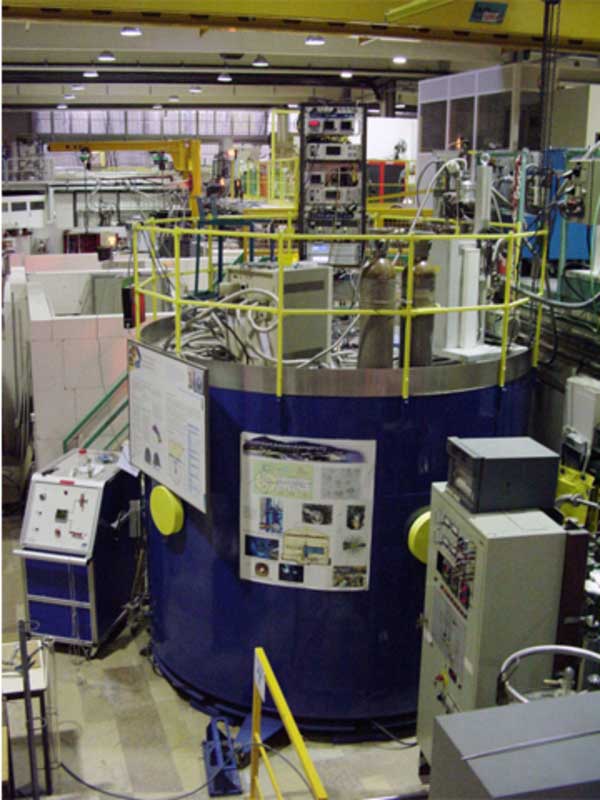
D2AM beamline at European Synchrotron Radiation Facility
Isabelle MORFIN: Associate scientist, with Stéphan ARNAUD, Nils BLANC, Gilbert CHAHINE and Maxime DUPRAZ
The team is strongly involved in the D2AM line, dedicated to both diffraction and wide- and small-angle X-ray scattering (simultaneous WAXS-SAXS measurements). 150 shifts (50 days) for the European Synchrotron Radiation Facility (ESRF) and 250 shifts for the Collaborating Research Group (CRG) are made available each year, respectively via proposal submission to ESRF and the SUNset website of Synchrotron SOLEIL.
The high flux of D2AM compared to X-ray facilities in laboratories, as well as the particular shape of the WAXS detector are key points to follow the structural evolution of soft matter during in-situ experiments, both at the atomic and larger scales. In addition, the optics of the D2AM line is optimized for anomalous measurements (aWAXS- aSAXS).
Thanks to two projects, Magnifix and Diademe, a completely new configuration of the WAXS-SAXS setup will be available by fall 2022, allowing for a larger detection area, a wider range of scattering vectors, and new detectors.
A New Generation of Ultrasmall Nanoparticles Inducing Sensitization to Irradiation and Copper Depletion to Overcome Radioresistant and Invasive Cancers
Paul Rocchi, Delphine Brichart-Vernos, François Lux, I. Morfin, Laurent David, Claire Rodriguez-Lafrasse, Olivier Tillement
Pharmaceutics, 2022, 14 (4), pp.814. ⟨10.3390/pharmaceutics14040814⟩
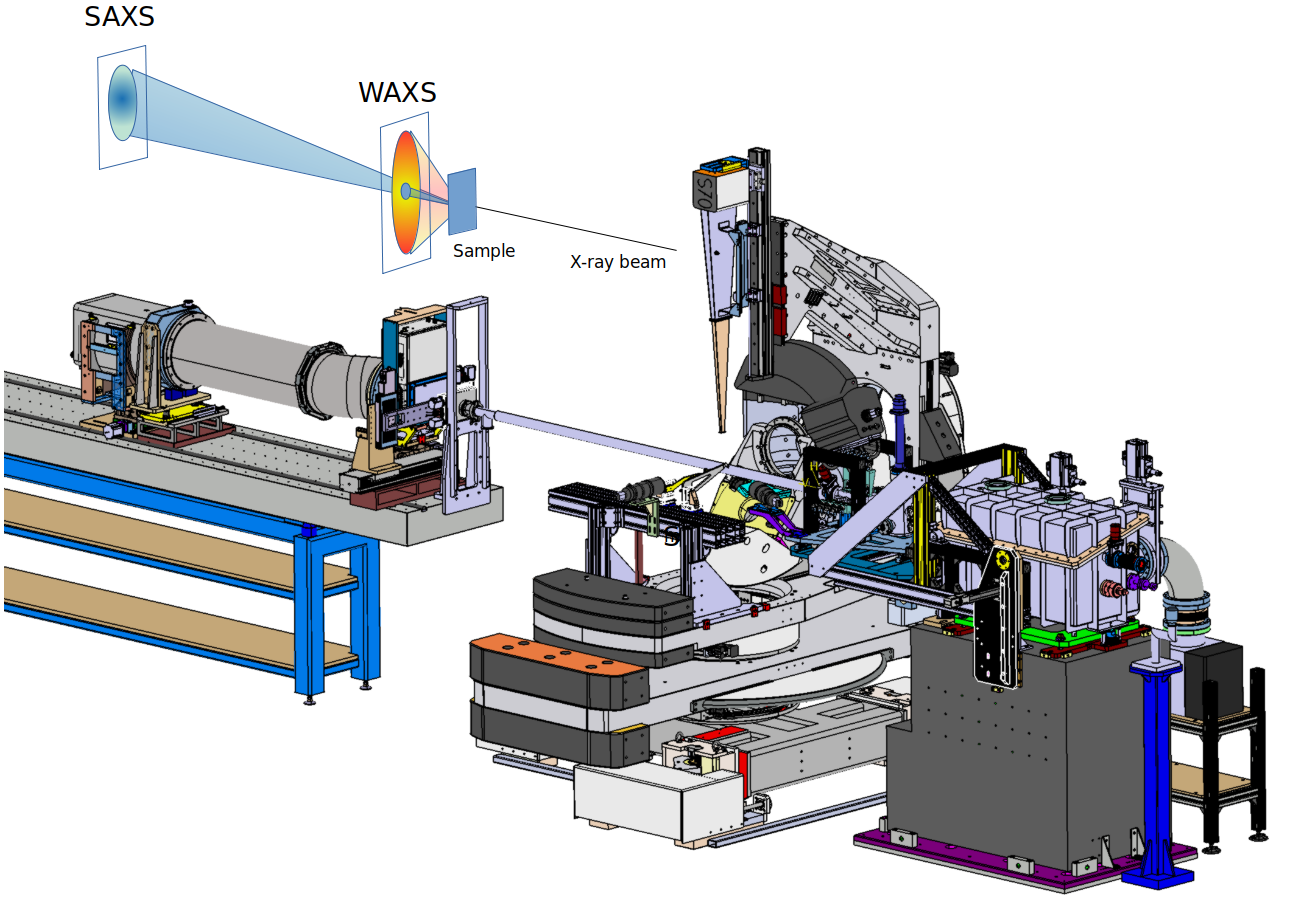
Development of dedicated instruments at LIPhy
Dynamic Surface Force Apparatus
Élisabeth CHARLAIX, Benjamin CROSS and Romain LHERMEROUT
In order to study the physics of fluids confined between solid surfaces, an instrument has been developed by the team, in interaction with the design office and the workshop of the laboratory. The principle of the Dynamic Surface Force Apparatus consists in confining the fluid -often a liquid- between two macroscopic surfaces -a sphere of millimetric radius and a plane- forming a model nanopore of variable size. The distance between the surfaces is controlled by a piezoelectric element, the interaction force between the surfaces induces the deflection of an elastic element and these quantities are measured by optical interferometry.
In addition to having a model geometry with surfaces whose properties can be changed on demand, the interest of our approach is to be able to probe simultaneously the quasi-static and dynamic responses of the system. We can then measure interaction forces up to ~100 µN with a sensitivity of ~100 nN, from a distance of ~10 µm to the contact with a resolution of ~10 pm.
A micro-nano-rheometer for the mechanics of soft matter at interfaces
Léo Garcia, Chloé Barraud, Cyril Picard, Jérôme Giraud, Elisabeth Charlaix, Benjamin Cross
Review of Scientific Instruments, 2016, 87 (11), pp.113906. ⟨10.1063/1.4967713⟩
Correction of non-linearities in quadrature phase differential interferometry
Dandara Velasco, Caroline Cramail, Jérôme Giraud, Benjamin Cross and Romain Lhermerout
Measurement Science and Technology, 2024, 36, 1, 015035. ⟨10.1088/1361-6501/ad9518⟩

Nanotribometer
Lionel BUREAU
We study the friction properties of thin films of soft materials, in air or liquid media, using a nanotribometer built on the basis of a Surface Forces Apparatus operating in shear. A new instrument has been designed in 2021, displaying µN force resolution in both normal and shear directions, and allowing for film thickness monitoring with sub-nm resolution using multiple-beam interferometry. The current instrument uses mica as a reference substrate, which can be further modified in order to control surface chemistry.
A surface force apparatus for nanorheology under large shear strain
Lionel Bureau
Review of Scientific Instruments, 2007, 78, pp.065110. ⟨10.1063/1.2748362⟩
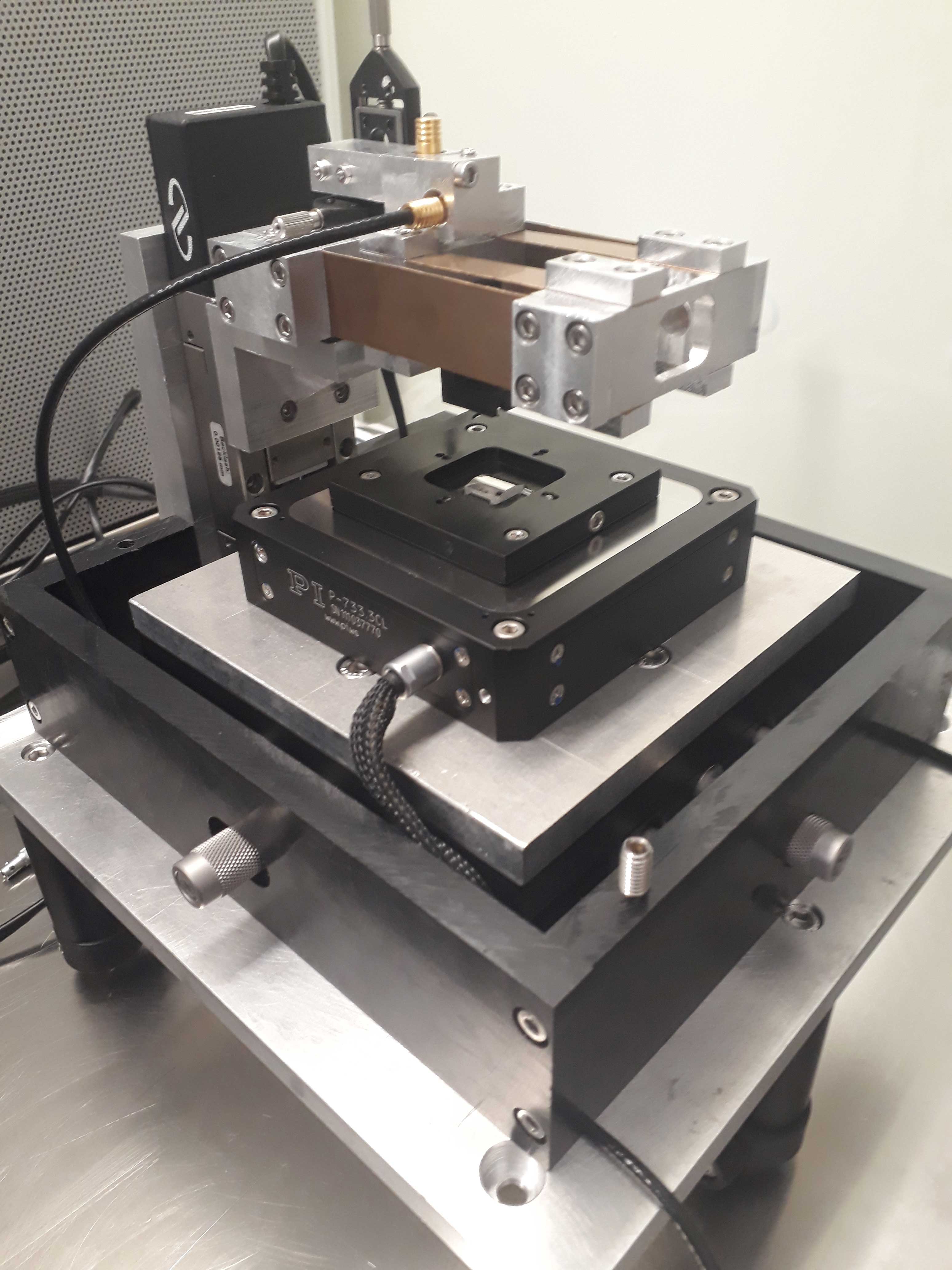
Force Feedback Microscope
Joël CHEVRIER and Élisabeth CHARLAIX
To probe the viscoelastic response of a material, Atomic Force Microscopes (AFM) excite a tip-cantilever system at its mechanical resonance. This has two consequences: i) the frequency chosen is not related to the system under consideration but to the operation of the probe, ii) the energy involved in this mechanical oscillation generally drives the tip-cantilever system beyond the linear regime. All this results in acquisition of sophisticated data and in processing, such as AFM multi-frequency analysis.
The Force Feedback Microscope (FFM) that we have developed in the laboratory is not limited by these two aspects. It allows quantitative and simultaneous nanoscale measurements of force (from 10 pN to 10 nN), local stiffness and dissipation coefficient on soft matter samples in liquids. It can thus be called nano-SFA. Already used with model systems (capillary bridge, DLVO interaction) and living cells, the FFM is intended for final applications in polymer physics and biology.
Why do atomic force microscopy force curves still exhibit jump to contact?
Mario S. Rodriguès, Luca Costa, Joël Chevrier, Fabio Comin
Applied Physics Letters, 2012, 101, pp.203105. ⟨10.1063/1.4766172⟩

Dynamic porosimeter
Cyril PICARD and Élisabeth CHARLAIX, in collab. with Charles JOSSEROND (Laboratoire de Science et Ingénierie des Matériaux et Procédés, Grenoble)
The filling and emptying kinetics of non-wetting pores of nanometer to sub-nanometer size remain largely to be explored and understood in the emerging field of angstrofluidics. Due to the high confinement, these phenomena take place at pressures of several hundred bar. In order to be able to study them, we have developed a dynamic porosimeter which allows to work up to more than 1000 bar over a temperature range of -10 to 80°C and especially to access nearly 4 decades of filling/emptying times (10 ms - 100 s). This instrument is unique in its kind, since all commercial porosimeters operate in quasi-static regime
Funding: ANR LyStEn
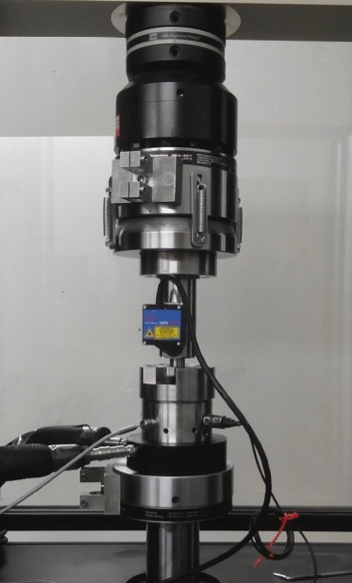
Pico flow sensor (pL/min)
Cyril PICARD and Élisabeth CHARLAIX
The term nanofluidics refers to flows at the nanometric scale. However, this field has been developed without their direct characterization, which is notoriously difficult experimentally at this scale. We have taken up this challenge by developing a pico flow sensor based on the method of liquid accumulation during a limited time. The accumulated volume is precisely measured by deformation of a membrane equipped with piezoelectric gauges. This approach allows the detection of volume variations of a few pL. By adjusting the integration time, the sensor offers a measurement range over three decades from nL/min to pL/min, equivalent of 1 mL in 2000 years. This sensor offers a sensitivity 4 orders of magnitude higher than commercial sensors.
Funding: Région Auvergne-Rhône-Alpes
Dispositif et procédé de mesure de débit d’un liquide
Cyril Picard, Elisabeth Charlaix, Preeti Pharma
France, N° de brevet: 1000450890. 2018
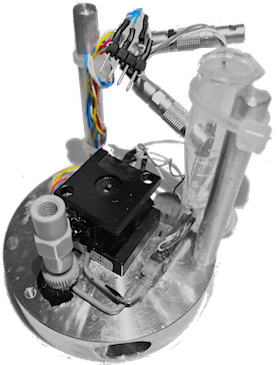
Transient grating spectroscopy
Marie PLAZANET and Christophe RAMBAUD
Transient grating spectroscopy is a nonlinear pump-probe optical technique. A transient index grating is photo-induced on the sample by the interference of two pump pulses, and probed by diffraction of the probe beam. The time-resolved diffraction intensity reflects the relaxation modes of the sample to equilibrium. A Heterodyne detection provides a great signal enhancement with a separation of the real and imaginary parts of the refractive index. In soft matter, far from any resonance, the technique allows the measurement of the signal over several orders of magnitude in time, and the characterization of damped acoustic oscillations occurring at short times, the mass/density transport dynamics and the thermal diffusion.
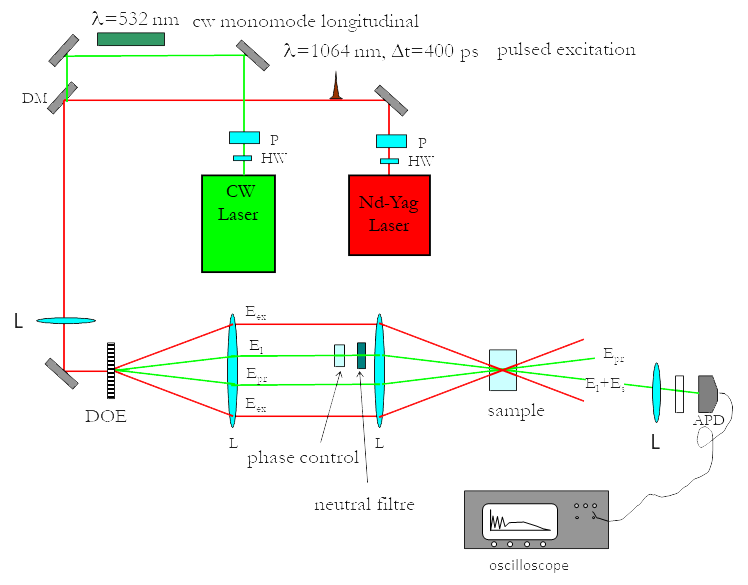
- Share
- Share on Facebook
- Share on X
- Share on LinkedIn